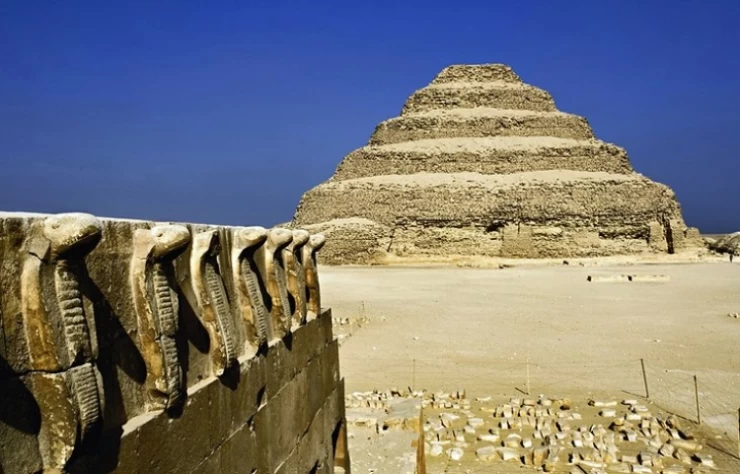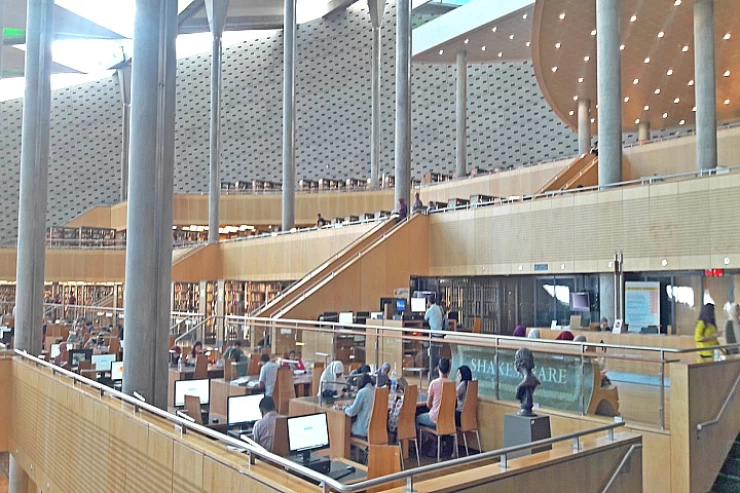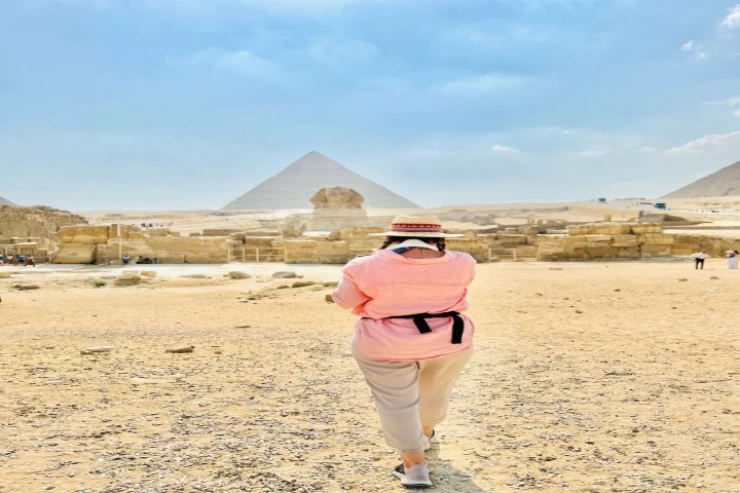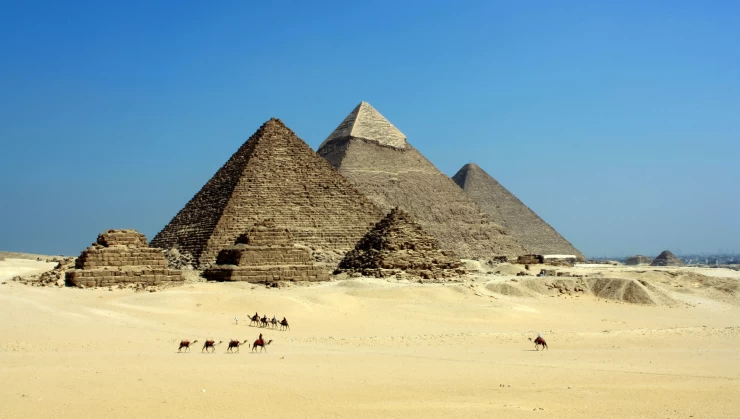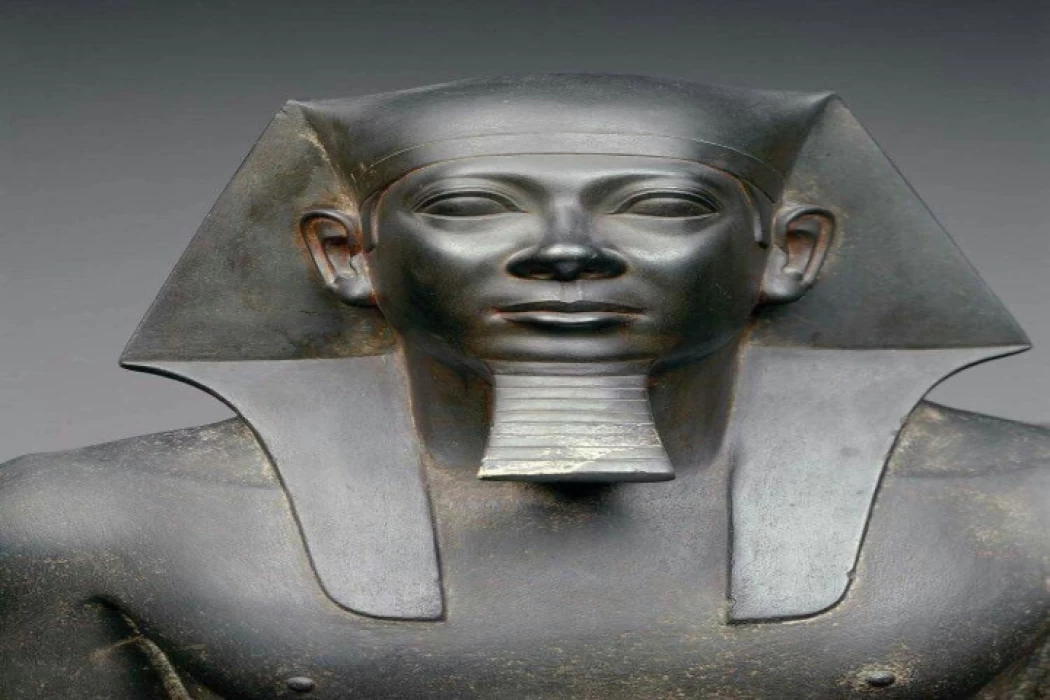
Re Mycerinus
Re Mycerinus
Nella lingua egizia, la piramide di Menkaure era conosciuta come "Netjer-er-Menkaure", ovvero "Menkaure è divina", e ciò risale al re per il quale questa piramide fu costruita per essere utilizzata come tomba per l'aldilà.
È il costruttore della terza piramide più grande della necropoli di Giza che conclude una grande era di magnificenza architettonica, il Faraone è considerato il figlio del re Chefren e della regina Khamernebti I. Si è sposato giovane con sua sorella, che era diventata il futuro la regina Khamernebti II, gli diede un figlio chiamato Khunre, che probabilmente morì molto giovane.
Il re Mycerinus ha sposato altre due mogli, ma nessuno dei loro nomi è noto agli storici. Aveva un figlio da una di queste mogli, chiamarono il giovane principe Shepseskaf, che successe a suo padre sul trono d'Egitto, e aveva una figlia dall'altra, Khentkaus I, che in seguito potrebbe aver sposato Userkaf, il primo re della V dinastia.
Le migliori opere di King Mycerinus:
Contrariamente a Cheope e Chefren, Micerino fu successivamente visto come un re generoso e saggio. Ciò potrebbe essere stato causato dal fatto che la sua piramide, costruita vicino alle piramidi di Cheope e Chefren a Giza, era poco meno della metà delle dimensioni di queste due grandi piramidi.
Se è vero che non abbiamo ricevuto alcuna spiegazione che indichi le ragioni di una diminuzione così repentina e notevole, ci sono comunque possibili ragioni. Ad esempio, possiamo intuire che poiché la maggior parte dei veri artigiani erano impegnati a costruire templi e scolpire statue, le risorse di Micerino erano ormai ridotte all'osso; inoltre, la costruzione di cinque grandi piramidi durante i quattro regni precedenti aveva certamente svuotato i tesori reali.
È anche possibile che Mycerinus non abbia sentito il bisogno di una piramide di dimensioni colossali. Un cambiamento nelle concezioni teologiche legate alla morte avrebbe potuto significare che i templi funerari erano considerati più importanti della tomba vera e propria, e infatti, il tempio funerario di Micerino è relativamente grande rispetto alla sua piramide, potrebbe semplicemente essere che l'altopiano di Giza abbia avuto inizio di essere sovraffollato o forse che il faraone, dubitando della sua sopravvivenza, aveva deciso di essere cauto.
La piramide di Mycerinus, come puoi vedere durante il tour alle Piramidi di Giza, non fu completata quando Mycerinus morì ed è stata completata solo parzialmente dal suo successore, Shepseskaf. La parte superiore è stata finita nell'ormai tradizionale pietra calcarea fine di Turah, ma 16 corsi nella parte inferiore sono stati lasciati spogliati. Questo può mostrare, almeno per la piramide di Mycerinus, che l'involucro esterno è stato posato dall'alto verso il basso, probabilmente durante la rimozione della rampa che era utilizzata per trasportare i pesanti blocchi di granito rosso verso l'alto.
Puoi vedere la piramide di Mycrinos durante il tour delle piramidi dall'aeroporto del Cairo.
Cairo Top Tours ti aiuterà a visitare uno delle tre piramidi che si considera la più piccola, oltre alle altre piramidi le quale tra le sette miravigli del mondo, e poi ti darà l'opportunità a guardare la Grande Sfinge che nel passato era la guardiata delle tombe, e anche noi non dimentichiamo la guida toristica che ti aiutira a sapere la storia egizia e la spiegazione della costruzione delle piramidi.Inoltre, il nostro rappresentante vi aiuterà a scattare foto indimenticabili.
In the Egyptian language, the Pyramid of Menkaure was referred to as "Netjer-er-Menkaure," or "Menkaure is divine." This refers to the king for whom this pyramid was constructed to serve as a tomb for his afterlife.He is the builder of the third greatest pyramid in the Giza Necropolis, which ended a great era of architectural magnificence. The Pharaoh is considered to be the son of King Chephren and Queen Khamernebti I. He got married young to his sister, who had become the future queen, Khamernebti II. She bore him a son called Khunre, who probably died at a very young age.
Menkaure was the king who built the third pyramid; in ancient Egyptian, "Netjer-er-Menkaure," "Menkaure is Divine," is what this king's pyramid was referred to in the ancient Egyptian tongue. It is also the termination point in monumental constructions at Giza for a pyramid meant as an afterlife tomb. Menkaure, also called Mycerinus, was born of King Khafra and Queen Khamernebti I. He married Khamernebti II, who became a queen after having a son who was named Khunre and who likely died young. His other son was called Shepseskaf, who succeeded him, and one daughter, Khentkaus I, who probably married Userkaf, the first king of the Fifth Dynasty. No predecessor of Menkaure had ever been rated as wise and benevolent king by the populace, and as such his pyramid was not of much greater size.
However, one could say that the scaling down probably had no solid reason backing it; rather, speculations from a few commentators could turn the economy over it, or that some changed religious ideas that increasingly put funerary temples above erectile pyramids, or even too rigid as the Giza Plateau started to get crowded. The pyramid remained incomplete on the death of Menkaure, as it was finalized under Shepseskaf; the upper part was clad in fine limestone while the lower portion remained harsh granite. Cairo Top Tours will take you on an exceptionally interesting trip to the Pyramids of Giza, including the stunning Great Pyramid of Khufu, the awe-inspiring Pyramid of Khafra, and the notable Pyramid of Menkaure. Also to be appreciated will be the Great Sphinx, the immortal guardian to all within the necropolis. All this will be under the guidance of expert guides who will inform you of the history, culture, and traditions of ancient Egyptians while giving you the perfect possible chance to capture moments to remember at these historic sites.
One could say that scaling down had no solid reason to back it; merely speculation from a few commentators could turn the economy about, or that some changed religious ideas increasingly placed funerary temples above pyramids in terms of erection, or else too rigid as the Giza Plateau began to get crowded. The pyramid was left incomplete at the death of Menkaure and was seen through to completion under Shepseskaf; the upper part of this was clad in fine limestone, while the lower slots were left in rough granite. A trip to Cairo Top Tours promises a high-interest overview of the Pyramids of Giza, including the stunning Great Pyramid of Khufu, the awe-imposing Pyramid of Khafra, and the noteworthy Pyramid of Menkaure. Also included will be the Great Sphinx, an everlasting guardian of all in the necropolis. All this will be under the experienced guides who will narrate to you the history, culture, and traditions of ancient Egyptians while giving you the best possible chance to capture moments to immortalize at these historical sites.
There is no solid ground for this scaling down, but some commentators suggest that it is due to economic reasons, that or some changed religious outlook now putting funerary temples above pyramid size, or due to practical reasons as the Giza Plateau started getting crowded. The pyramid remained unfinished upon Menkaure's death and was completed by Shepseskaf, with its upper part clad in fine limestone while the lower portion was left in rough granite. Cairo Top Tours will take you on a really interesting journey to the Pyramids of Giza, including the wonderful Great Pyramid of Khufu, the majestic Pyramid of Khafra, and also the famous Pyramid of Menkaure. You will also be privileged to admire the Great Sphinx, the immortal guardian of all within the necropolis. All this should be done under the guidance of expert guides who will inform you about the history, culture, and traditions of ancient Egyptians while giving you a chance to capture moments to remember at these historic sites.







